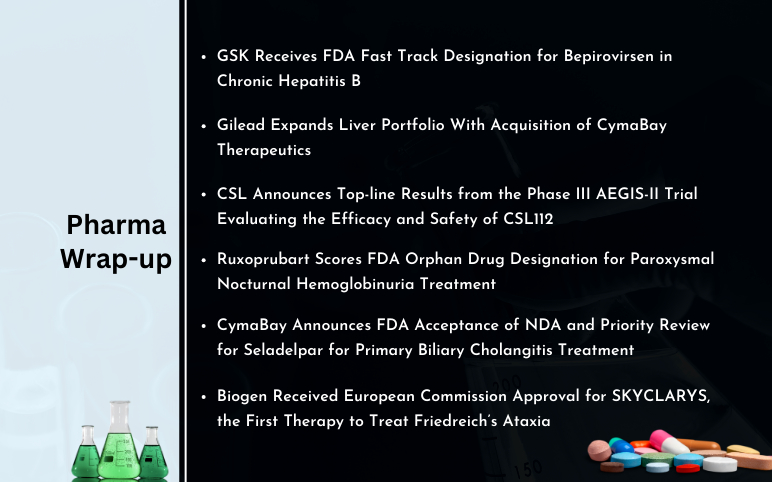Hepatitis B virus (HBV) infection is the 10th leading cause of death worldwide. With 2 billion people infected all over, HBV infection is a reason behind 500 000 to 1.2 million deaths per year. Hepatitis B is a lethal infection and has been a major global problem for years. If it lasts for over 6 months, it is termed as Chronic Hepatitis B virus infection. The chances that acute HBV infection will take up a chronic form depends on age. According to a study by Kim et al., (2018), approximately 90% of infants got chronically infected, whereas the percent of adults developing Chronic Hepatitis B was less than 5%. As per DelveInsight’s Chronic HBV epidemiological analysis, the total Chronic Hepatitis B prevalent cases were reported to be 5,797,240 in 2017 in the 7MM.
Chronic HBV infection often is accompanied by long-term complications. There are always risks of transcending the infection to lethal forms such as primary liver cancer (and hepatocellular carcinoma (HCC), the sixth most common cancer worldwide. Further, it is a leading cause of chronic hepatitis and advanced-stage liver diseases, including cirrhosis. During the course of the infection, approximately 15–40% of people with chronic HBV infection are at the risk of developing complications ranging from hepatocellular carcinoma (HCC) to HBV-related death (Winston E. Abara et al., 2017).
To put a leash on the increasing cases of morbidity and mortality due to chronic HBV infection, the WHO recommended and implemented mass immunization programs and awareness campaigns. At present, Vaccines against Hepatitis B are the best and most effective options available in the Hepatitis B market. Safe and effective vaccines against HBV infection have been available since 1982. These are included in routine childhood vaccinations in many countries. It has helped in controlling the infection in some western countries since not all the nations adopted the guidelines. Thus, there exists a huge burden posed by Chronic Hepatitis B.
Most people diagnosed with Chronic Hepatitis B depend on medication and require lifetime treatment. Treatment helps reduce the risk of liver disease and prevents from passing the infection to others. The present Chronic Hepatitis B market also houses therapeutic vaccines including recombinant peptide-based vaccines, DNA-based vaccines, viral vector-based vaccines, and cell-based vaccines. The prophylactic vaccine against HBV contains the S envelope protein of the virus, which is mainly produced in yeast S. cerevisiae containing a recombinant DNA plasmid expressing S antigen. In the absence of prophylaxis or treatment, HBV reinfection occurs in 75%–80% of persons who undergo OLT (Samuel D et al., 1993).
Other treatment options present in the Chronic Hepatitis B market are Antiviral drugs, Immunomodulator drugs, and Liver Transplantation. Liver transplantation is considered in patients with liver failure secondary to chronic hepatitis B. However, with liver transplantation, there are several complications such as recurrent Hepatitis B virus infection, which is often aggressive and associated with a significant decrease in graft and patient survival rates. Nevertheless, by the virtue of Antiviral medications as well as effective prophylactic regimens, there has been a drastic improvement in the Chronic Hepatitis B patient outcome. There are six US FDA-approved antiviral drugs, however, only three first-line antivirals are recommended treatments owing to their better resistance profile. These include tenofovir disoproxil (Viread/TDF), Vemlidy/TAF (tenofovir alafenamide), and Entecavir (Baraclude). First-line antivirals are recommended because they are safer and most effective.
Immunomodulator drugs are also reliable in boosting the immune system during the battle against the Hepatitis B virus. The most commonly prescribed Immunomodulator drugs include interferon alfa-2b (Intron A) and pegylated interferon (Pegasys). Immunomodulator drugs are the only option for patients who are co-infected with Hepatitis delta. Furthermore, these medications are a promise to patients who wish to opt for a finite course of therapy.
Without a shimmer of doubt, the treatment for Chronic Hepatitis B has considerably improved. However, the treatment approaches at hand are supportive and are laden with a high cost of treatment. Further, the treatment regimen available continues life-long, thus making patients dependent on medications. Therefore, there is a need for effective and curative treatment approaches. DelveInsight estimates an encouraging shift in the Chronic Hepatitis B market landscape for the foreseeable future owing to a significant number of pharmaceutical companies working to find a cure for the CHB virus infection. Several key pharma players are involved in developing the therapies for Chronic Hepatitis B including Assembly Sciences (ABI-H2158, ABI-H0731), Gilead Sciences (Selgantolimod), GlaxoSmithKline (GSK3228836), Regeneron Pharmaceuticals (Cemiplimab), Janssen Sciences (JNJ-56136379), and Dicerna (RG6346). The anticipated launch of emerging therapies is expected to open new during the forecast period of 2020-2030.
Further research and studies are required to establish the cost-effectiveness of the emerging therapies and if they can prevent the recurrence of Chronic Hepatitis B after liver transplant. Recent advances in the field of medical technologies and pharmaceutical sciences have also provided a gateway for new avenues towards achieving a curative treatment for Chronic Hepatitis B. Overall, with a dramatic shift in the interest towards eliminating HBV infections, more efficacious treatments, mass immunization programs, and safe injection techniques, the cure may be well within the attainable capacity in the foreseeable future.



